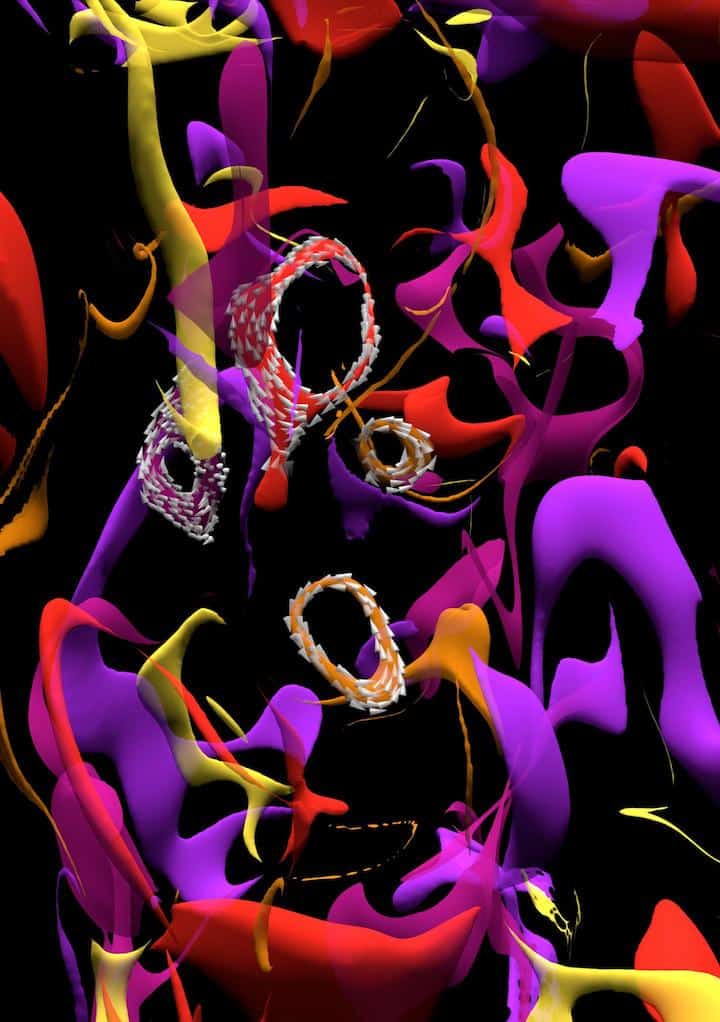Atoms and molecules make vortex beams
15 Oct 2021 Isabelle Dumé
A wave-like property previously only seen in beams of light and electrons has been observed for the first time in atoms and molecules. By passing beams of helium and neon through a grid of specially shaped nanoslits, researchers led by Edvardas Narevicius of Israel’s Weizmann Institute of Science succeeded in giving the beams a non-zero orbital angular momentum (OAM). The resulting structures are known vortex beams, and they could be used for fundamental physics studies such as probing the internal structure of protons.
Many natural systems contain vortices – think of tornadoes and ocean eddies on Earth, the red spot on Jupiter and gravitational vortices around black holes. On all scales, such vortices are characterized by the circulation of a flux around an axis. In the quantum world, these swirling structures are found in ensembles of particles that can be described by a wavefunction, including superfluids and Bose-Einstein condensates.
Twisted wavefronts
When the phase of this wavefunction, or wavefront, varies in a corkscrew fashion around an axis as a beam propagates through space, the wavefront is described as being twisted, and the beam carries OAM. Since elementary particles also carry OAM, researchers have, in recent years, succeeded in generating OAM-bearing vortex beams with laser photons and even electrons. Such beams have led to impressive advances in a range of fields, including optical imaging, optical and electron microscopy, communication and quantum optics.
Until now, however, no vortex beams had ever been created from non-elementary particles. One reason for this is that composite particles are heavier than electrons, meaning that the length scale at which their wave-like nature starts to become evident – their de Broglie wavelength – is smaller. This is a challenge because to generate wave-like beams, particles need to be sent through diffraction gratings with slit dimensions that correspond to their de Broglie wavelength. For atoms and molecules, this wavelength is typically on the order of nanometres – too small for slits created using conventional micromachining techniques.
Transmission gratings with very small periods
Recent advances in nanotechnology have, however, made it possible to fabricate transmission gratings with spacings, or periods, as small as tens of nanometres. These nanoscale gratings can be used to diffract matter waves, and that is what Narevicius and colleagues did.
In a study published in Science, the team describe creating vortex beams by passing a supersonic gas of helium atoms through specially nanofabricated diffraction gratings that contain structures known as fork dislocations. These dislocations induce a circular phase in the diffracted beam, and the researchers confirmed that this was the case using a detector placed behind the gratings.READ MORE

Like classical vortices and photon vortex beams, the newly-created atom vortex beams show up as a row of doughnut-shaped rings, and the phase of their wavefunction revolves around the axis of the dislocation. Each “doughnut” observed corresponds to a beam with a different OAM.
The researchers repeated their experiment with neon atoms and helium dimers, and they say that the technique could also be applied to other atomic and molecular gases. One particularly exciting possibility, they suggest, would be to make vortex beams with protons and use them to probe the internal structure of this subatomic particle.

Isabelle Dumé is a contributing editor to Physics World
from physicsworld.com 15/10/2021

Δεν υπάρχουν σχόλια:
Δημοσίευση σχολίου